Last Updated on 12/09/2024
If you’re planning to visit India for the first time, then the Golden Triangle tour of India is the ideal match for your requirements. It is one of the most popular and well-explored trails amongst travelers. If you want to discover the real India, then this package is for you.
Golden Triangle tour of India is the journey to the three most prominent cities of India: Jaipur, Delhi, and Agra. You will visit Delhi, where you will see the famous monuments and explore the streets of Old Delhi and Chandni Chowk. After that, Agra with the exposure of Mughal Culture and last but not least Jaipur, the city of Maharajas and Maharanis.
Now, let’s see the best places to Visit during your Golden Triangle Tour of India:-
Delhi: Starting Point of Golden Triangle Tour of India
Golden triangle India itinerary will start from the city of Delhi, which is famous for its nightlife, food and famous monuments. Whether it is the Lotus temple, the India Gate, or the Akshardham Temple, this place is full of adventures and thrills. You can explore the local streets of Old Delhi and relish some mouth-watering local food out there. The venue also consists of adventure parks where you can go with your family during your Delhi tour.
Places to visit in Delhi on Golden Triangle Tour of India
1- India Gate
- Built: 1931
- Designed by: Sir Edwin Lutyens
- Commemorates: 80,000 soldiers of World War I
- Height: 138 feet (42 meters)
- Location: Eastern end of Rajpath, Delhi
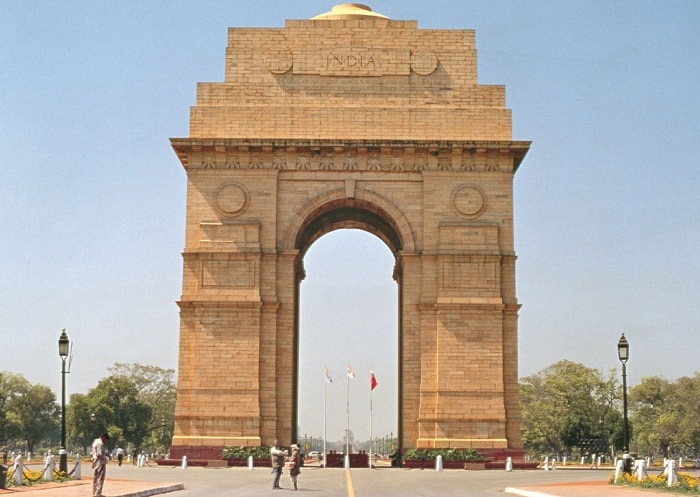
One of the famous attractions of Delhi is the India Gate, earlier known as All India World Memorial. This renowned art was built to commemorate more than 80,000 soldiers who were killed in World War II. If anyone is visiting Delhi, this is the first place that comes in their mind to visit. It is located near the eastern end of Rajpath and consists of a height of 138 feet (around 42 meters).
2- Red Fort
- Built: 1638–1648
- Commissioned by: Mughal Emperor Shah Jahan
- Material: Red sandstone
- UNESCO World Heritage site: 2007
- Location: Old Delhi, India
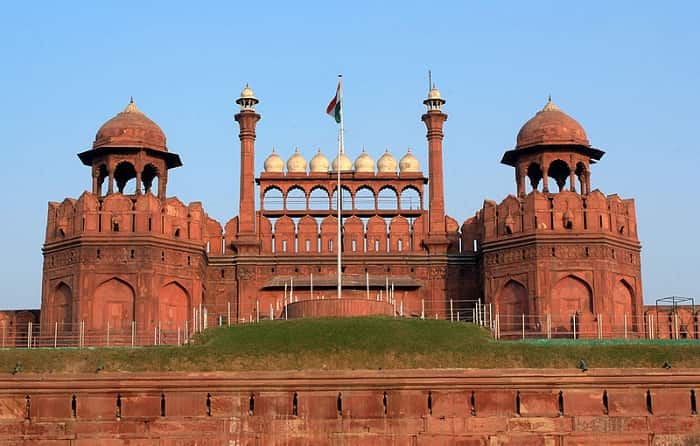
Another famous monument of Delhi is the beautiful Red Fort. The Lal Qila is the representation of the culture that was bought by the Mughals in India. Independence Day is celebrated at Red Fort every year in Delhi. The citadel consists of red sandstone walls and took a decade to complete by the Mughal Emperor Shah Jahan. It adds more significance to the history of Mughal in India.
3- Qutub Minar
- Built: 1193
- Commissioned by: Qutb-ud-Din Aibak
- Height: 73 meters
- UNESCO World Heritage site: 1993
- Architectural Style: Indo-Islamic
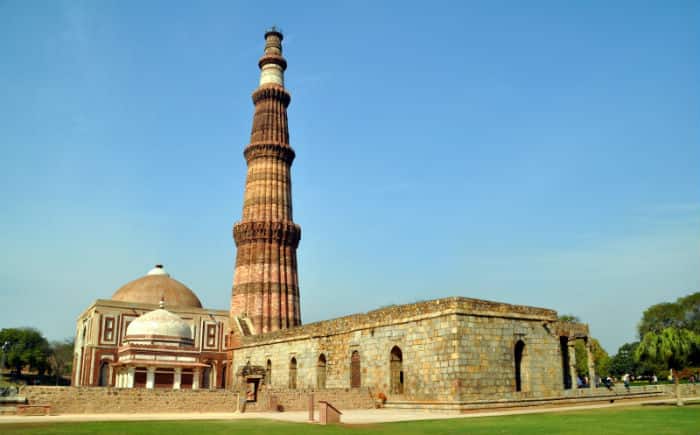
The Qutub Minar is a tall 73-meter towering pillar built-in 1193 by Qutb-ud-Din Aibak. This site is considered to be a World Heritage Site and has impressively survived the ravages of time. The Minar is surrounded by bushes, trees, and lush green gardens from all sides that give primary picnic goals. Qutub Minar is the most-loved and most-visited tourist destination that attracts almost 4 million visitors per year.
4- Jama Masjid
- Built: 1650
- Commissioned by: Mughal Emperor Shah Jahan
- Capacity: 25,000 worshippers
- Location: Old Delhi, India
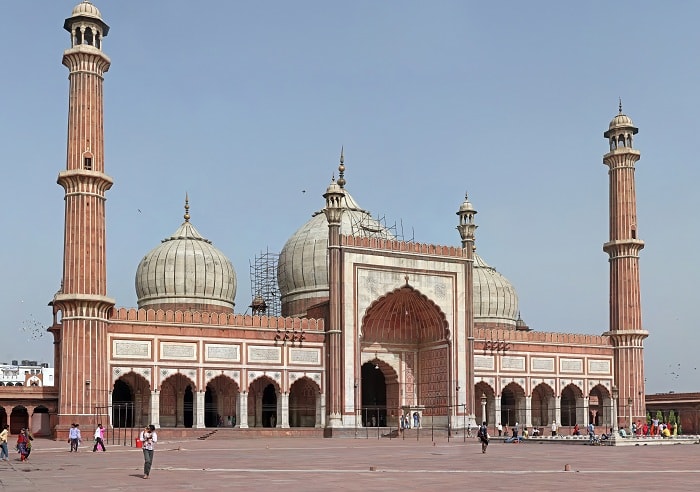
Jama Masjid of Delhi, also known as Masjid-i-Jahanuma, is located in Old Delhi. The Mughal Emperor Shah Jahan constructed it in 1650. Shah Jahan is famous for Islamic architecture, and his most famous work is the seventh wonder- the Taj Mahal. The second-largest mosque in India is the Jama Masjid on the Indian subcontinent, where the Muslims gather for their Friday communal prayer. If you are looking for some unique experience, then you can add Jama Masjid in your Delhi tour.
5- Akshardham Temple
- Built: 2005
- Dedicated to: Swaminarayan
- World’s largest Hindu temple: Guinness World Record
- Notable for: Intricate carvings and cultural exhibitions
- Location: NH 24, Pramukh Swami Maharaj Marg, New Delhi

Besides the Mughal Architecture, Delhi consists of some Hindu shrines, and one of them is the beautiful Akshardham Temple. This place is a perfect definition of Indian culture, spirituality, and devotion. It is considered as the world’s largest Hindi temple by the Guinness World Record, and it is dedicated to Swaminarayan. Undoubtedly, Akshardham is amongst the topmost tourist attractions in Delhi.
6- Lotus Temple
- Built: 1986
- Designed by: Fariborz Sahba
- Architectural Style: Lotus flower shape
- Open to: All religions
- Location: Bahapur, Kalkaji, New Delhi
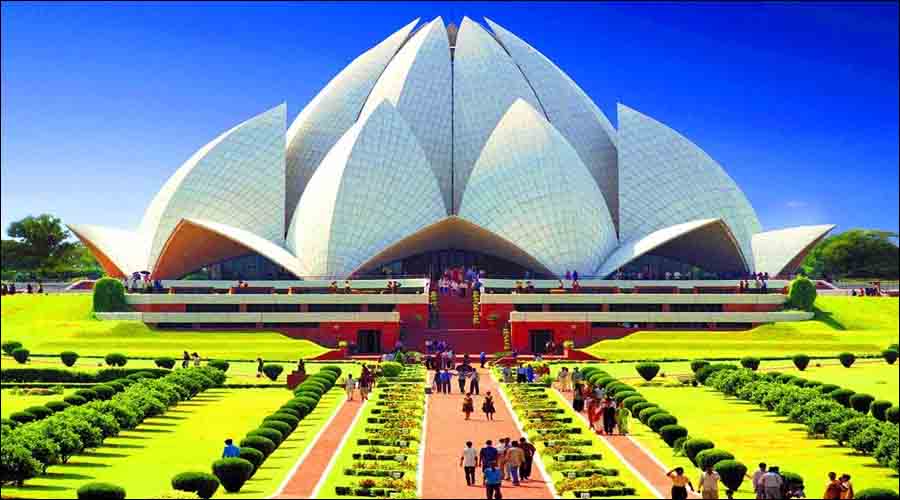
Shaped in an alluring shape of a lotus with the pretty white petals, Lotus Temple is a breathtaking building and serves as a prime destination for tourists. Lotus Temple, also known as Kamal Mandir, has no specific pattern for worshipping and for performing ceremonies. This place is a must-visit for architecture lovers and enthusiasts.
7- Humayun’s Tomb
- Built: 1565
- Commissioned by: Humayun’s widow, Empress Bega Begum
- Architectural Style: Persian
- UNESCO World Heritage site: 1993
- Location: Mathura Rd, Nizamuddin, Delhi
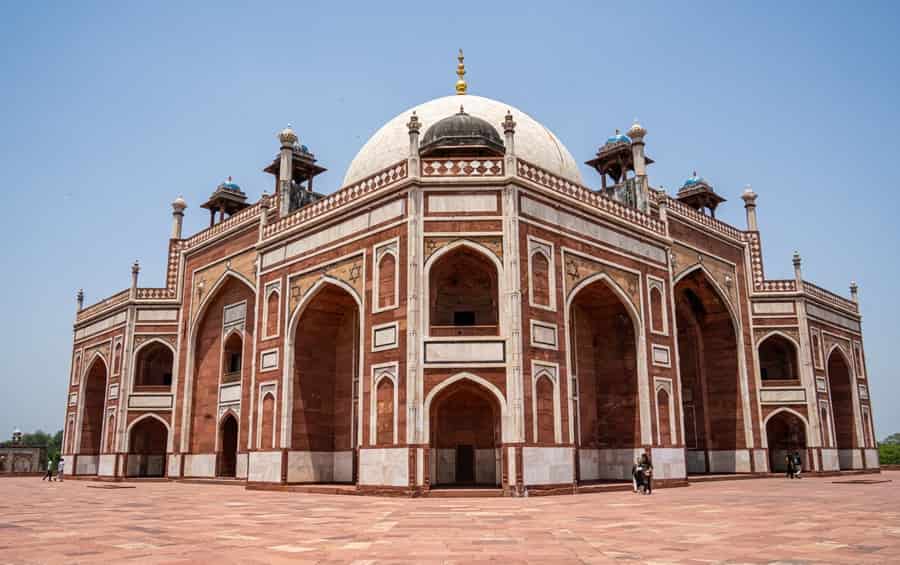
Humayun’s Tomb is a luxurious tomb, which is also the last refuge of the Mughal Emperor Humayun. It is situated in the eastern part of Delhi and plays a significant role in Mughal history.
Agra: Second City to visit in Golden Triangle Tour of India
The spot to the seventh wonder of the world- The Taj Mahal is the city of Agra. Situated on the bank of river Yamuna, this place gives us the feel of the Mughal lifestyle. This city is famous for its local food and sweets like Agra ka Petha.
Places to Visit in Agra on Golden Triangle Tour of India
8- Taj Mahal
- Built: 1632–1653
- Commissioned by: Mughal Emperor Shah Jahan
- Material: White marble
- UNESCO World Heritage site: 1983
- Recognized as: One of the New Seven Wonders of the World

The Taj Mahal is the silvery-white marble mausoleum situated on the bank of the river Yamuna. The Mughal Emperor Shah Jahan built this remarkable monument in the memory of his wife, Mumtaz Mahal. And it took ten years to create this masterpiece. The Taj Mahal was designated as a UNESCO WORLD HERITAGE SITE for contributing to the universally admired monuments of the world’s heritage. You can add the Taj Mahal tour to your bucket list.
9- Mehtab Bagh
- Built: Early 16th century
- Designed by: Mughal Emperor Babur
- Location: North of the Taj Mahal, across the Yamuna River
- Known for: Panoramic views of the Taj Mahal
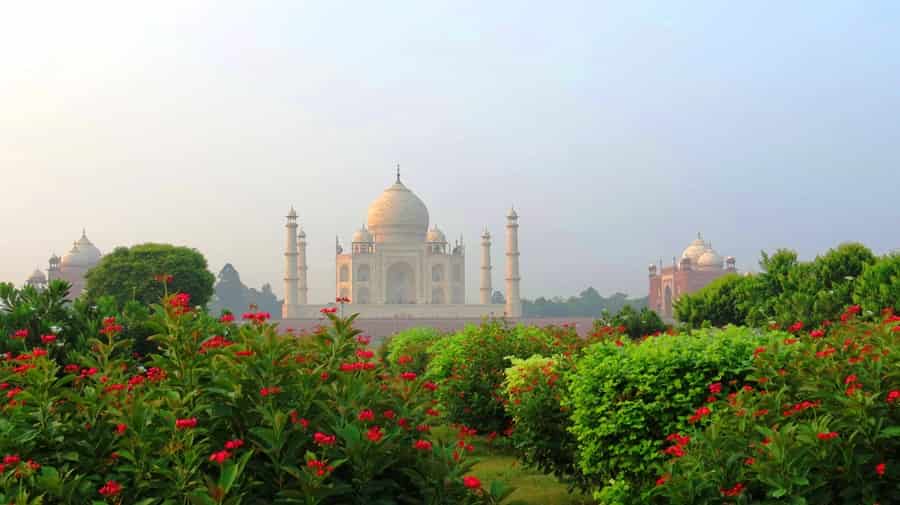
A Charbagh complex in Agra, Mehtab Bagh, is located in the northwards of the Taj Mahal complex. It is the last of the Mughal Gardens built on the side of river Yamuna. This place is the ideal location for watching the Taj Mahal from far away. With beautiful ponds, fountains, and lush green gardens, the Mehtab Bagh is a perfect place for picnics and hangouts for travelers and the local people.
10- Fatehpur Sikri
- Built: 1571–1585
- Commissioned by: Mughal Emperor Akbar
- Material: Red sandstone
- UNESCO World Heritage site: 1986
- Notable Structures: Buland Darwaza, Panch Mahal
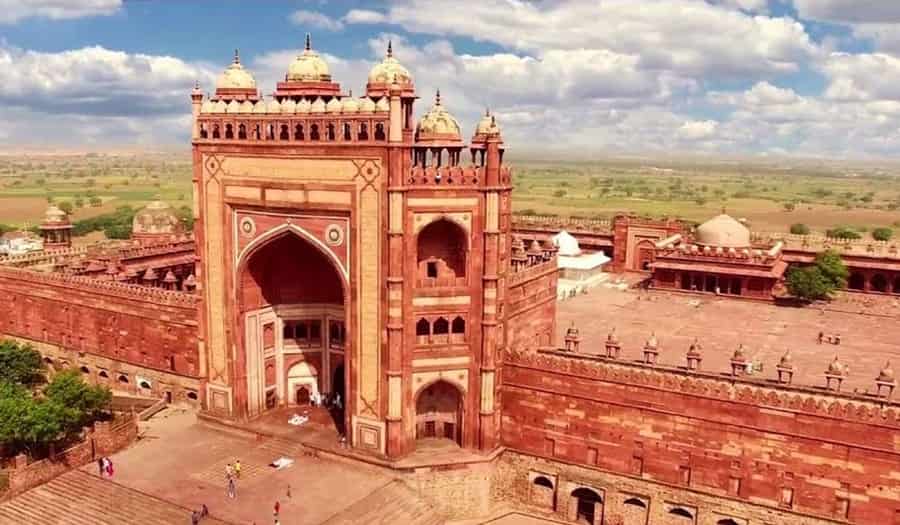
Positioned at a distance of 37 km away from the city of Agra, Fatehpur Sikri is a city built by the Mughal Emperor Jalal-ud-din Muhammad Akbar. This city is predominantly built with special red sandstones, and the walls show the poignancy and glory of the times. This site is suitable for a one-day outing.
Jaipur: Pink city Last Stoppage of Your Golden Triangle Tour
After Agra, you will be welcomed to the Pink City Jaipur that is famous for its diverse culture, delicious cuisines, and historical palaces. One can spend the entire day in the city markets and local bazaars of Jaipur. The city is full of lights and colors. Enjoy the local food on the streets and shopping for you and your family.
Places to Visit in Jaipur on Golden Triangle Tour of India
11- City Palace
- Built: 1729–1732
- Commissioned by: Maharaja Sawai Jai Singh II
- Architectural Style: Combination of Rajput, Mughal, and European styles
- Location: Central Jaipur, India
- Features: Chandra Mahal, Mubarak Mahal
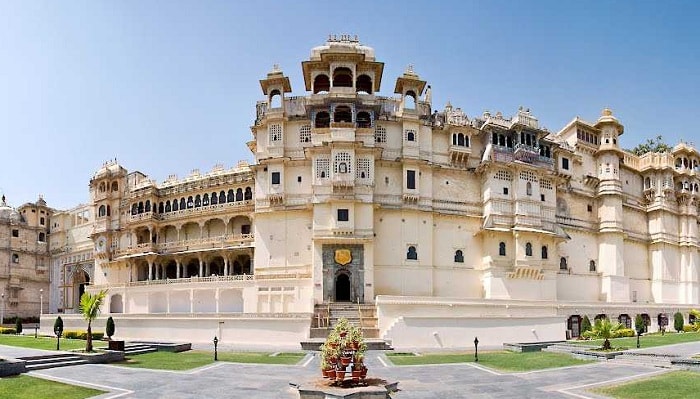
The City Palace is located in the heart of the Jaipur city, and it is a place where Maharaja reigned. It is home to the famous Chandra Mahal and Mubarak Mahal and several other Mahals which are a part of this palace. The City Palace reflects the lifestyle of Rajputs and Maharajas with European architecture.
12- Hawa Mahal
- Built: 1799
- Commissioned by: Maharaja Sawai Pratap Singh
- Designed by: Lal Chand Ustad
- Architectural Style: Rajput
- Known for: 953 small windows (Jharokhas)
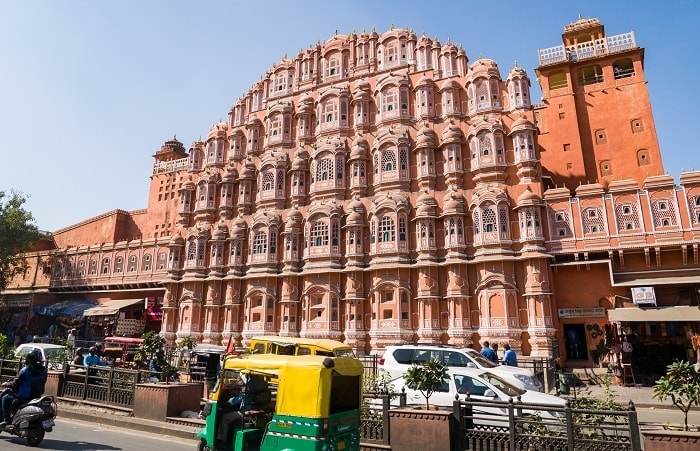
The Hawa Mahal, also known as the Palace of Winds, is an unexceptional pink-painted delicately built hive. This beautiful and extraordinary building was constructed by Maharaja Sawai Pratap Singh so that the royal ladies of the family can watch the city routines and life from the windows at ancient times. This wonder consists of more than 100 windows on a single wall that makes it a more unique and remarkable site of the Jaipur tour package.
13- Nahargarh Fort
- Built: 1734
- Commissioned by: Maharaja Sawai Jai Singh II
- Location: Aravalli Hills
- Features: Panoramic views of Jaipur, food court, museum
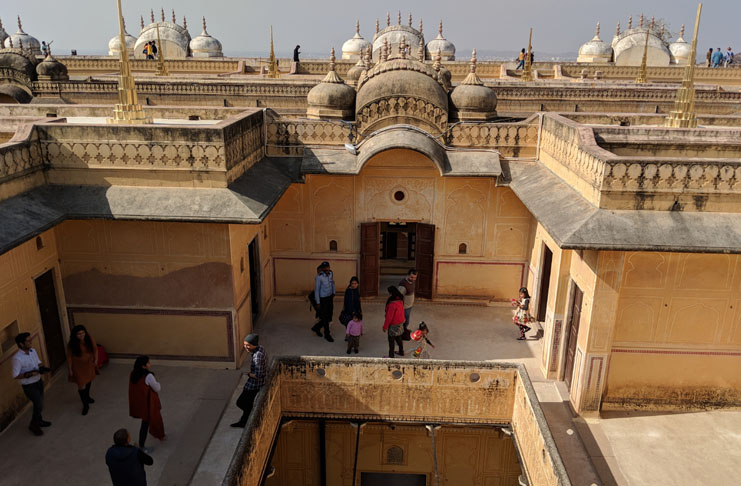
Nestled along the giant Aravali Hills, Nahargarh Fort gives a mesmerizing view of the complete Jaipur city and a beautiful lake in between. The fort consists of a museum, food court, and restaurants for making the visit more exciting. Visiting this place is a must during your Jaipur tour.
14- Amber Fort
- Built: 1592
- Commissioned by: Maharaja Man Singh I
- Location: On top of Aravalli Hills
- Features: Maze-like staircases, Sheesh Mahal (Mirror Palace)
- Notable for: Blend of Hindu and Rajput architecture
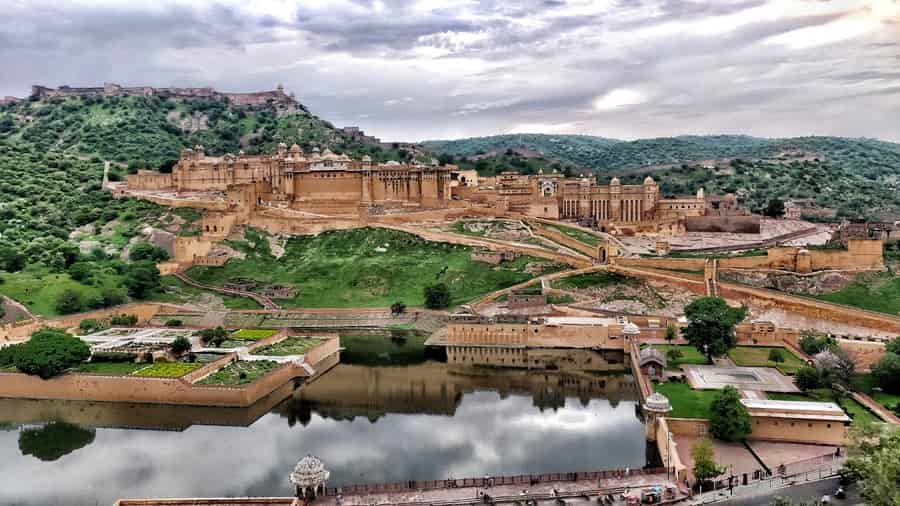
Another wonder of Jaipur found on the top of Aravali Hills is the magnificent palace, Amber Fort. The fort is made with hundreds of maze-like staircases and secret passages in ancient times, which acted as emergency getaways for the Maharajas during wartime. People come to Amber Fort to adore the beauty of the architecture and to take blessings of the Goddess Shiva Devi.
In the night, the fort is decorated and lighted so beautifully that it compensates your all-day tiredness and makes you feel all alive. The place is 10 km away from the city and you can reach there easily by taking a cab or taxi.
Suggested Tour















 Call
Call WhatsApp
WhatsApp Enquiry
Enquiry